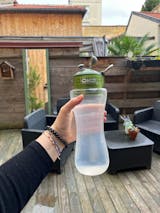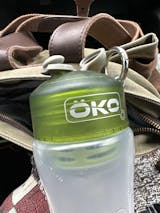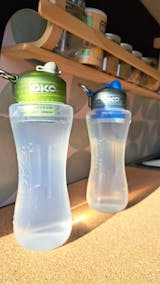
What is ÖKO?
👨👩👧👦 A reusable filter bottle designed for both children and adults.
⚡ Press, drink, and enjoy filtered water in one simple step.
🔁 Durable and economical: only the filter needs to be replaced after approximately 378 L (+/- 6 months if 2 L/day).
🌍 A simple gesture for the planet: less single-use plastic waste.

1
Technology inspired by NASA
An innovation from 2002, serving the water you drink.
Developed from a NASA program to filter water on the ISS, ÖKO technology combines alumina nanofibers and micropowdered activated carbon.
Tested by the Pasteur Institute in Lille and Guadeloupe (chlordecone), IANESCO, and Eurofins, it demonstrates a significant reduction in more than 200 pollutants: PFAS, TFA, microplastics, heavy metals, pesticides, drug residues, viruses, and bacteria.
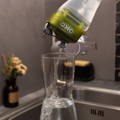
2
Higher quality tap water
For water that tastes better every day
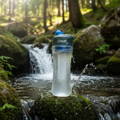
3
Filtration of non-potable water
A trusted solution for adventure and travel
When traveling, hiking, or living a nomadic lifestyle, the ÖKO filter is a reliable and immediate solution for improving the quality of untreated fresh water (rivers, lakes, fountains).
Tests conducted in COFRAC-accredited laboratories demonstrate a 99.9993% reduction in bacteria (Salmonella) and up to a 99.992% reduction in viruses.
Compact, reusable, and sturdy, the ÖKO water bottle is now used in over 120 countries, with very positive user feedback, particularly when traveling abroad, where it has proven its reliability and practicality.

4
Tested in COFRAC-accredited laboratories
Reliability tested to the highest standards
The performance of ÖKO filters has been verified by several COFRAC-accredited laboratories in accordance with ISO/IEC 17025.
More than 200 reference compounds were analyzed: PFAS, heavy metals, microplastics, pesticides, viruses, bacteria, etc.
These results guarantee scientific rigor and complete traceability of performance.
The full reports are available on the Laboratory Analysis page.
🔍3 steps to understanding filtration🔍
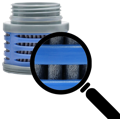
01
Filter composition
The filter membrane is composed of a natural mineral fiber (pseudoboehmite AIOHH), antibacterial ions, and a microscopic sprinkling of activated carbon.
It is 8 mm thick and has more than 400 pores.
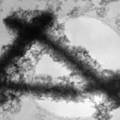
02
Mechanical filtration
Its pores are calibrated to 1.25 microns, mechanically blocking all particles larger than or equal to this size, such as sediments and impurities.
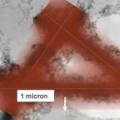
03
Submicron filtration
When it comes into contact with water, the natural mineral fiber emits a positive charge field that surrounds the hollow volume of the pores. The water is thus stripped of submicron contaminants, which are attracted like a magnet to the membrane's retention surface. This is electro-adsorption.
Laboratory tests

01
Virus

02
Bacteria

03
Chlorine

04
PFAS

05
TFA

06
CVM

07
Pesticides & herbicides

08
Chlorothalonil & Chlordecone

09
Heavy metals

10
Fluorine

11
Drug residues

12
Plastic
⚖️ Official disclaimer - Responsibility & transparency ÖKO EUROPE
Accredited tests: Technology originally developed by NASA (2002); Performance verified by accredited laboratories (COFRAC ISO/IEC 17025).
Proof of effectiveness: Thousands of users in over 120 countries report effective use in natural and urban waters.
The ÖKO water bottle is a convenient mobile filtration device designed to reduce the measured presence of numerous tested pollutants.
It does not replace an approved water purification system.
Reliability and conditions of use: Performance observed always depends on the initial water quality and compliance with the maintenance instructions provided in the manual. Keep this manual and follow the instructions for maintenance and filter replacement.
Individual responsibility: Each user remains responsible for the water they choose to filter. ÖKO Europe cannot control or guarantee all situations of use.
Any improper use (standing water, unsuitable liquids, risky handling) or deliberate misuse shall render the user liable.
Full transparency: All analysis reports and test protocols are available on theLaboratory Analysis page.
For our children and our planet

The future generation
Let's teach them the right habits from an early age.
Thanks to ÖKO!
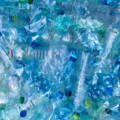
For our planet
Less plastic pollution. For future generations.
Thanks to ÖKO!
The contaminated water becomes perfectly clear again.
Why does ÖKO use plastic?
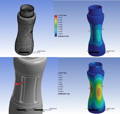
- Food grade.
- Compressible and lightweight: thanks to this flexible material, you can easily squeeze and push water through the filter.
- Resistant and durable: designed to last for several years, withstanding both high temperatures and daily use.
- Taste and odor free: it preserves the natural, pure taste of your water.
- At the end of its life, your water bottle can be 100% recycled.
ÖKO EUROPE & Olympique de Marseille

Technical data
Technology
ÖKO's ultra-filtering water bottle combines unique alumina nanofiber technology, derived from the mineral pseudoboehmite, with mechanical filtration with a medium pore size of 1.25 microns.
Flow
Up to 10x higher than equivalent filtration systems (2 L / min)
Material
Food-grade polypropylene (PP5) and Tritan (cap)
Maintenance
The bottle, pipette, and cap (without the filter) can be easily washed at room temperature with soap and/or water.
NEVER clean the filter or allow it to come into contact with any substance other than water (if you need to filter muddy water, rinse the outside of the filter with water).
Bottle capacity
Available in 650 mL and 1 L sizes
Filter life
Up to 378 L (with clear water containing little sediment). The more sediment in the water, the shorter the filter's lifespan will be.
Weight
147 g (650 mL bottle) / 172 g (1 L bottle)
Dimensions
H 23.3 cm (650 mL) / H 26.5 cm (1 L)
Diameters
Ø 71 mm (650 mL) / Ø 85 mm (1 L)
Included in the water bottle
Carabiner, nozzle cap and ÖKO filter
 Contact us
Contact us
 FREE shipping* on orders over €75
FREE shipping* on orders over €75
 Delivery within 2 to 5 days
Delivery within 2 to 5 days
 Secure payment
Secure payment
 Official distributor
Official distributor

